The oversight body for the Oregon Department of Transportation has given the agency permission to move forward on their $715 million I-5 Rose Quarter project without doing more rigorous and independent analysis of its environmental and community impacts.
In a 5-0 vote taken on a meeting held over the phone today, Oregon Transportation Commission Chair Robert Van Brocklin said he was satisfied with steps taken by ODOT thus far and that, “I just don’t find the basis in the record to change to an EIS [Environmental Impact Statement].”
At issue was whether ODOT should be required to perform an EIS or stick with their already completed Environmental Assessment. Both processes are part of the US Federal Highway Administration National Environmental Policy Act (NEPA). ODOT completed an EA last February, a step required to determine whether or not a project will have significant impacts.
With their vote today, the OTC has swept aside serious concerns and calls for an EIS by many regional elected leaders and organizations, and thousands of Portlanders who oppose the project. In the past two weeks alone, the group No More Freeways says over 350 people submitted public comment calling for an EIS. Last spring a comment period led to over 2,000 public omments, 89% of which were in opposition to the project.
Among the organizations and elected officials that have called for an EIS include: Portland Public Schools Board, Albina Vision, Metro President Lynn Peterson, Multnomah County Commissioner Jessica Vega Pederson, Oregon House Speaker Tina Kotek, Portland Commissioner Chloe Eudaly, Portland Mayor Ted Wheeler, and others.
The City of Portland is technically a partner on the project. But their own agencies and advisory committees oppose it. The Portland Parks and Recreation Bureau announced in late February they would not sign off on a key “letter of concurrence” for the project because of its significant impacts to the Eastbank Esplanade. And the Portland Bureau of Transportation’s own Bureau Budget Advisory Committee has called for an EIS, as has PBOT’s Bicycle Advisory Committee and Pedestrian Advisory Committee.
Advertisement
None of these calls for an EIS were mentioned in the meeting today. And no one gave any voice to the thousands of comments logged in opposition to the project.
“We’re not going to get any more information from an EIS that we got with the EA. We need to move this project forward.”
— Martin Callery, OTC
As OTC commissioners lobbed softball questions to ODOT staff, activists flooded a chat window adjacent to the YouTube livestream. They pointed out oversights in OTC members’ comments and expressed exasperation at the outcome. “ODOT has been lying and hiding the true impacts according to their own surface level research. They have misled legislators, local officials, and the public, knowingly, without censure,” wrote one person. And as commissioners and ODOT staff discussed how the project would relieve congestion, Portland mayoral candidate Sarah Iannarone typed, “The committee members seem unfamiliar with the concept of induced demand. Freeeway expansion will not reduce the bottlenecks about which they seem so concerned.”
ODOT’s job at this meeting (and for the past several months) has been to convince the community, elected officials and most important OTC members, that they hear concerns and are doing things to address them: They’ve hired more staff and consultants and have set up new advisory committees. Brendan Finn, ODOT’s head of the new Urban Mobility Office & Mega Project Delivery told commissioners his team is pushing forward on a plan to allow bus operators to use the expanded shoulders proposed in the project. “This will be an effective strategy to reduce greenhouse gas emissions,” he testified.
There’s a lot at stake for ODOT on this issue. They warned the OTC earlier this year that doing an EIS would lead to a three year delay and could add as much as $86 million in inflationary costs to the project.
To demonstrate that they are working closely with the community ODOT brought a special guest to the meeting (it wasn’t open to public testimony). Dr. Steven Holt is a pastor who grew up in the Albina neighborhood and now advises the city through positions on a Portland Housing Bureau oversight committee and the newly established I-5 Rose Quarter Project Executive Advisory Committee. Finn said Holt was brought in to lead their work on community collaboration. “We have an opportunity to do something restorative,” Holt testified today. “We can’t ignore the devastation of the community and with this opportunity we can do something phenomenal. To be in this seat is a massive thrill for me.”
Advertisement
In discussion prior to voting, Chair Van Brocklin, a partner in the law firm of Stoel Rives LLP, reminded listeners that, in his estimation, the OTC doesn’t have the power to stop this project because it was included as an earmark in House Bill 2017 that was passed by the Oregon Legislature and signed into law by Oregon Governor Brown. “Some of the comments I’ve read from the public have suggested that we’re deciding whether or not to build this project,” Van Brocklin said. “That decision was made in 2017 by putting it in the bill and directing its construction.”
As chair of an ostensibly independent oversight committee, Van Brocklin didn’t ask one difficult question of ODOT the entire meeting and it was clear he wouldn’t vote for the EIS.
Commissioner Martin Callery, a retired executive for the Port of Coos Bay, said he simply doesn’t think an EIS is necessary. “We’ve already made a commitment to look at sound issues and air quality issues as a separate component… We’re not going to get any more information from an EIS that we got with the EA. We need to move this project forward.”
Commissioner Sharon Smith, a lawyer from Central Oregon, said she felt comfortable without an EIS because, “A lot of the issues raised are legitimate concerns we’re addressing through directives we issued in January,” She also put a lot of stock into an Air Quality Technical Report (PDF) completed by ODOT last year. “I haven’t heard any evidence that would suggest that it’s flawed,” Smith said. That report says that a wider I-5 would actually improve air quality and lower GHG emissions because traffic would be moving instead of idling and much of the auto and truck fleet would be electric by the time the project is built.
Prior to his “yes” vote, Commissioner Alando Simpson said, “I’m ready to get to work.”
Chair Van Brocklin had the last word. He said he was comfortable with the actions the OTC and ODOT had taken since January to make sure they were involved in “the entire discussion” of community issues and not just ODOT’s freeway. An experienced lawyer, Van Brocklin added that he sees it as legal question and believes the State has complied with NEPA regulations. Beyond that, he felt the most compelling piece of evidence that enough analysis had been done was the air quality report. “It has not been rebutted by professional expertise,” he said, “and it concludes that the project as designed with slightly improve air quality.” “That may be hard for some people to accept but that’s what we have before us in the public record.”
UPDATE, 2:53 pm: Metro President Lynn Peterson was one of the local politicians who called for an EIS. Here’s what she had to say after today’s vote:
“While I’m disappointed in the OTC’s decision to bypass an EIS, I am appreciative of ODOT’s commitment to expand the scope of their environmental assessment to address the issues Metro has been flagging up to this point. Metro will continue to advocate for a project that offers restorative justice to the community that’s been harmed for decades by the construction of Interstate 5. We believe ODOT is capable of designing a project that mitigates the historic negative impacts of its construction and presence in our community, and meets the needs of our growing region and state.”
UPDATE, 3:22 pm: Multnomah County Commissioner Jessica Vega Pederson also demanded an EIS. Here’s her response to the vote:
“Since OTC has voted not to move forward with an EIS, it is imperative that they and ODOT are transparent and collaborative in what this project will look like for our community moving forward. I will continue to insist that this project embrace a restorative justice framework that helps heal a community torn apart by the freeway, enhances our bicycle and pedestrian options in the area, and includes tolling to reduce congestion and ensure we adhere to our climate goals. I’ve had good conversations with ODOT leadership and the OTC about these topics. Now is the time they keep their word on the type of project they will deliver.”
UPDATE, 3:29 pm: Portland Planning Commissioner and Metro Council Candidate Chris Smith has seen enough. After watching today’s vote “in horror” he wants to strip highway planning powers away from the OTC:
“Today we watched in horror, but not surprise, as the Oregon Transportation Commission voted to move the I-5 Rose Quarter Expansion project forward without a full Environmental Impact Statement.
The OTC has demonstrated that it thinks community input – over 2000 comments a year ago and another 460+ in the last two weeks calling for an EIS – is a virus, and it’s fully socially distanced and immune, casting this vote on a telephonic meeting during the middle of a pandemic.
I’m calling on the Oregon Legislature to remove responsibility for planning highways in urban areas from the OTC, shifting that responsibility to local MPOs (Metropolitan Planning Organizations). This is not a new concept, we do it today for transit. Just as Metro has planned the new Southwest Corridor light rail project, and is now transitioning it to TriMet for implementation, Metro should be responsible for planning highway projects in our region, turning them over to ODOT for implementation.”
— Jonathan Maus: (503) 706-8804, @jonathan_maus on Twitter and jonathan@bikeportland.org
— Get our headlines delivered to your inbox.
— Support this independent community media outlet with a one-time contribution or monthly subscription.


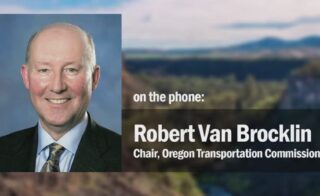
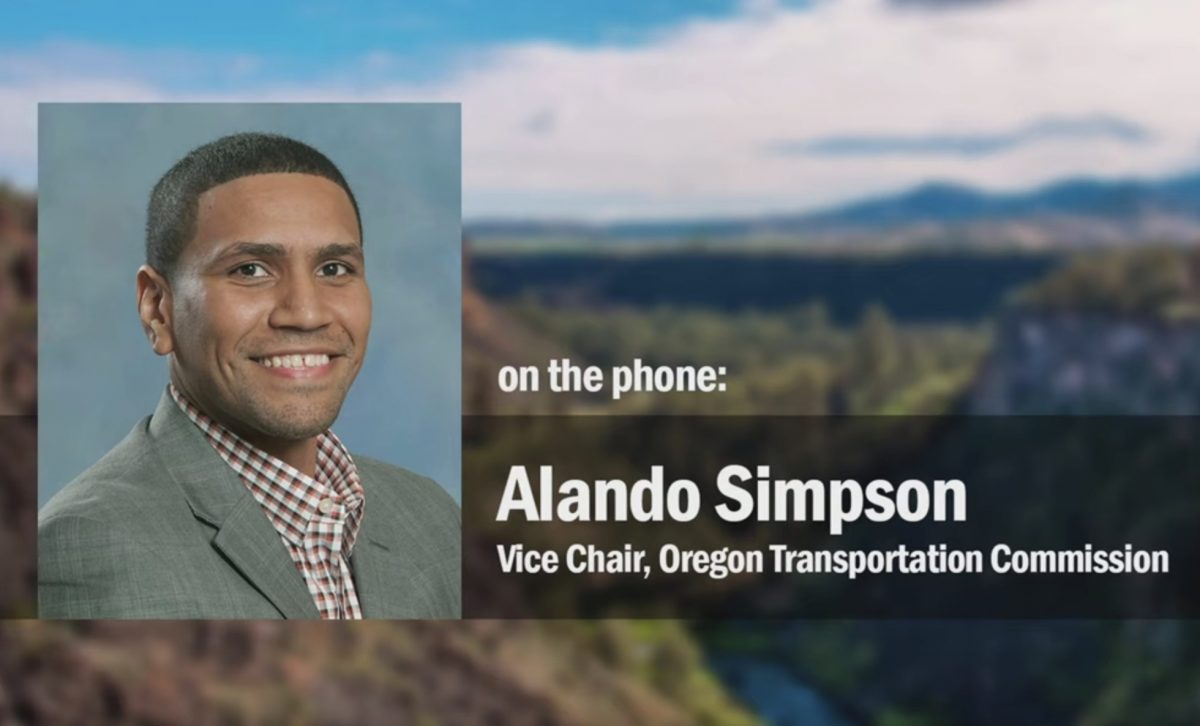

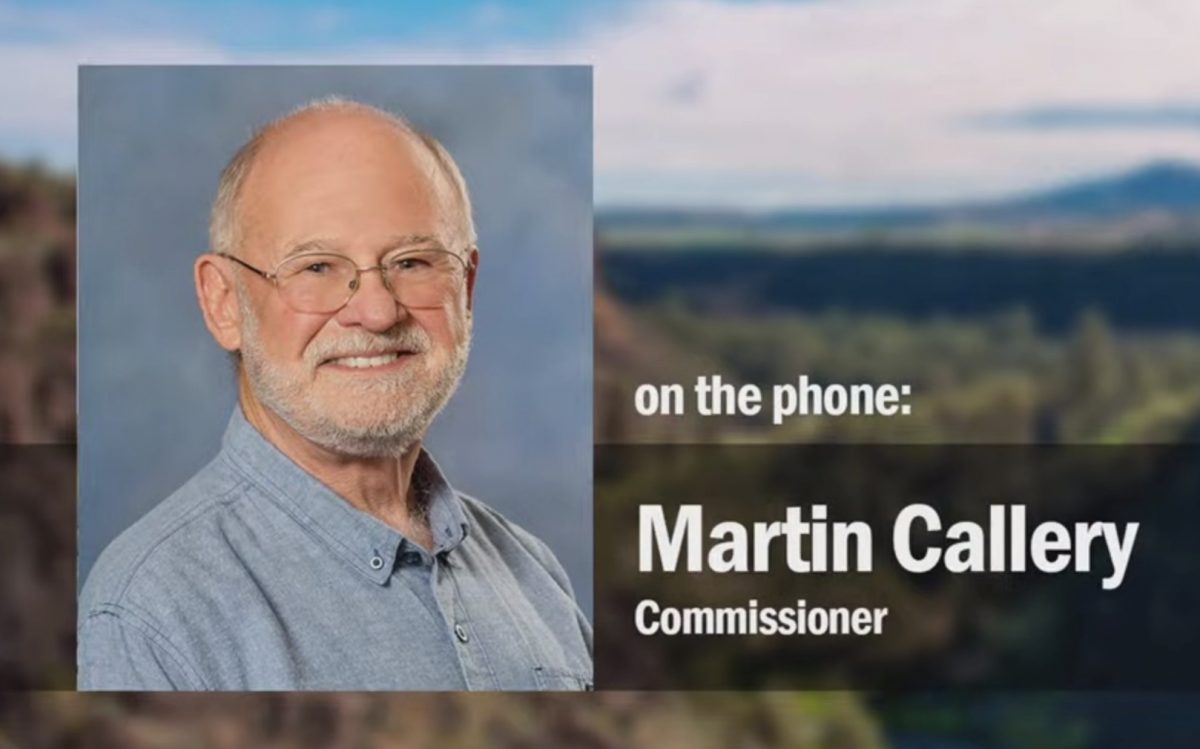
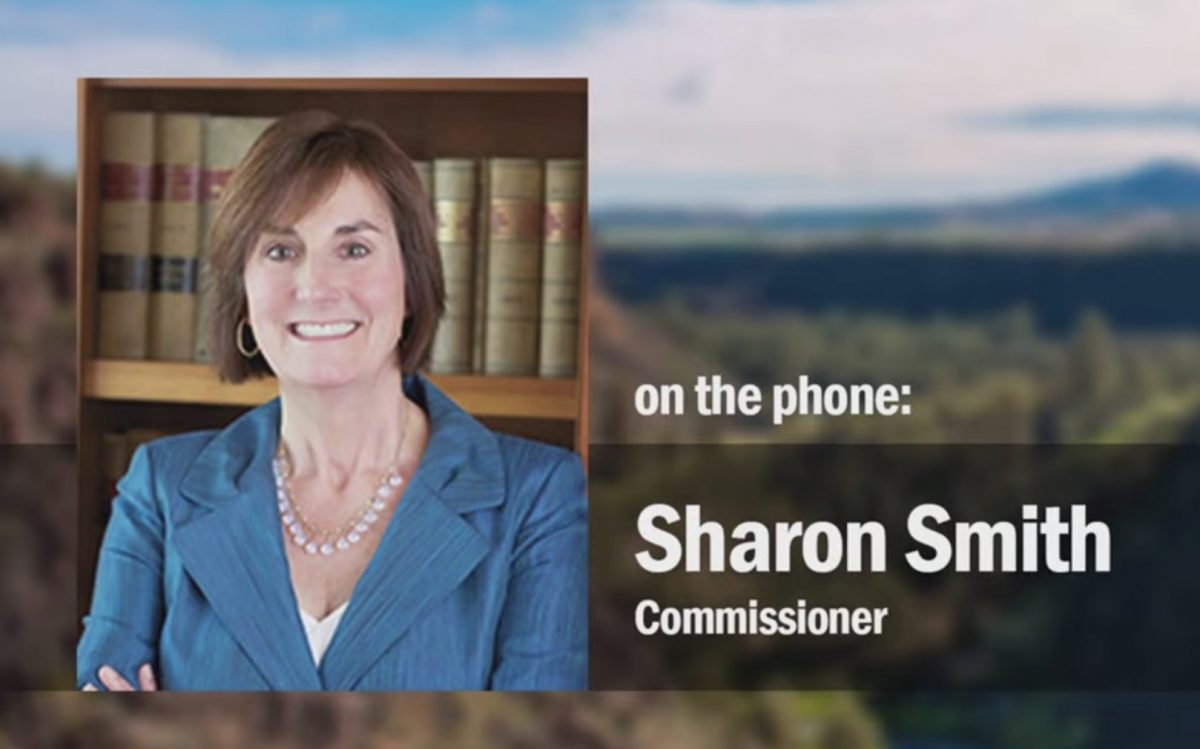

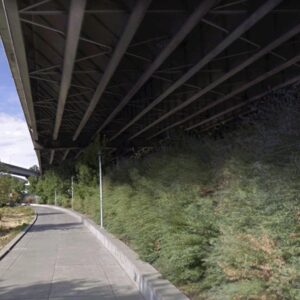
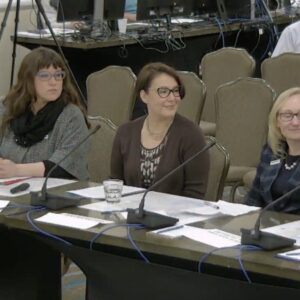
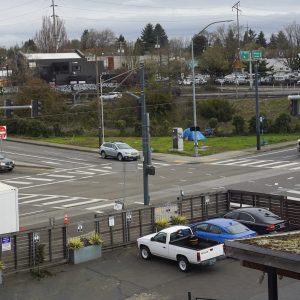
Thanks for reading.
BikePortland has served this community with independent community journalism since 2005. We rely on subscriptions from readers like you to survive. Your financial support is vital in keeping this valuable resource alive and well.
Please subscribe today to strengthen and expand our work.
And this is why we can’t have nice things.
Folks need to take a hard look at HB2017 vs what ODOT is proposing to build and how much it will cost. The decision to press ahead with construction before implementing peak-hour value pricing is a waste of time and money. Meanwhile everyone with the power to change the course is acting like their hands are tied and they have to approve whatever ineffective and wasteful design ODOT brings them.
It is curious to me that anyone would put much stock in the Air Quality Technical Report’s findings on GHG emissions, since the Air Quality Technical Report does not include findings on GHG emissions.
Chair Van Brocklin is wrong about HB 2017. It does not order ODOT to build the project, but simply to report to the Legislature on the “cost to complete” and subsequent progress on the project. On the opposite side, HB 2017 did order the Transportation Commission to institute “value pricing” on I-5 and I-205 from the Washington-Oregon border to where they meet south of Portland, to seek Federal permission by Dec. 31, 2018, and then to implement it. The Federal Highway Administration responded that ODOT hadn’t submitted a complete request, but once they did, approval of “value pricing” should only take a few months. The delay is because ODOT wants to use “value pricing” money to pay for widening the freeways, rather than for traffic management, since the Legislature didn’t provide enough money for the RQ project. The fault lies with Gov. Brown, who can fire the OTC at will, and local officials who speak out of both sides of their mouths about this project, and continue to push, behind the scenes, for the project to move forward.
I think you all need to see the bright side of the Rose Quarter boondoggle.
1. By ODOT’s own admission, this will not improve traffic through the Rose Quarter.
2. It’s going to be a fabulously awful construction project. They will have to close lanes for months and years to work on this. It will make traffic worse in the meantime. ODOT will also take longer than their estimate to get it done, extending the pain period.
3. Its going to be fabulously over budget. This baby is going to be $1 billion plus by the time its done. Now, you might say thats a waste of money, but the reality is that industry interests that own Kate Brown and ODOT are going to spend that money on increasing petroleum-centric transit. I’d much rather them spend the money on a low-value, high cost project like the Rose Quarter boondoggle than expanding something like the Sunset highway or some other suburban highway.
I can sort of buy in to that line of thinking, but it would be better if they just set up a replica of the Rose Quarter Project somewhere in Douglas or Lake County and spend the money and did the construction work on that. It would have about the same benefit to traffic as the Rose Quarter Project, but it would provide jobs to an economically downtrodden area, not have all the negative side effects to the current area that have been well detailed. Seems like a win-win to me.
An eminently modest proposal.
I wish I could agree – normally letting people shoot themselves in the foot works great as a learning experience. Unfortunately highway planners seem immune to learning from it, and that’s probably because the foot they’re shooting is mostly not their own. Some of them even reap advantage from selling foot-guns. They also don’t seem to get held accountable for cost overruns… costs are forces of nature that we’re powerless to control and they’re nobody’s fault and certainly you don’t mean to imply that we should simply stop building this crap? So it’s like there are no nerve endings in the foot. Finally there’s the ostensible goal: “reducing congestion.” Well in that case the bullet takes 5 years to hit the foot, and by then cause and effect are blurry enough that they’re able to blame it on “We didn’t fire enough bullets!”
Stretched that metaphor from a size 8 sock to a size 13 with a bullet-hole in it.
This is timed perfectly with Trump admin weakening automobile green house gas emission standards, which ODOT projections have not taken into account. Meanwhile, Oregon officials are parroting and pretending that all modes will be electric and GHG neutral in time to prevent climate change. 2020 is turning out to be the year of the most colossal failures of leadership.
Are they at least going to put in legit caps on the freeway that will support walkable neighborhoods?
I have been getting conflicting information on this.
They’ll give buildable caps lip service for a while, so they can pretend this still has some semblance of a street-level project. But they’ll be last in line for dollars and first to go when people start complaining about the cost once we’re ankle deep in this billion dollar boondoogle.
Heavy sigh. Remember when this was supposed to cost about $449,999,999.99? Just call it half a billion, I said. It didn’t take long.
Those lids are going to be sheeting off rain half the year, and a sun-baked wasteland the other half.
UPDATE, 2:53 pm: Metro President Lynn Peterson was one of the local politicians who called for an EIS. Here’s what she had to say after today’s vote:
That mention of “bus on shoulder” through the Rose Quarter seems to be a pretty bad case of green-washing. Do any buses actually go through that section? At most maybe some C-TRAN express lines, but I’m pretty sure a lot of those use I-405, so…
The C tran route 105 does not use that stretch of freeway.
UPDATE, 3:22 pm: Multnomah County Commissioner Jessica Vega Pederson also demanded an EIS. Here’s her response to the vote:
Beware any organization that hires Kris Strickler–the man has no regard for the life of anyone who is not driving a car.
IMO, the cut-rate solution would be to just expand to three lanes the .6 mile bottleneck under Broadway and Weidler. The hardest part of this would be whether those overpasses (incl. Flint) could be modified to move the supports further apart. Everything has been engineered for the exact specifications that we have now. If the supporting structure was steel I think it would be possible; but with concrete box girders its much harder to do. ODOT has accomplished some extensive rebuilds and they were discussing some this morning at the OTC meeting. The I-84 rebuild in Troutdale came to (as near as I can find out) $111 million for a one mile, two phase project. However, the RQ is a much more complicated plan.
Portland and METRO seem to be bent on adding more features to this project. And that is what is pushing the cost way up. Should the state (ODOT) actually pay for all of this? So the real fight in the end may come down to who pays for what. Everything up to this point has just been theory.
I hate to suggest this, but ODOT actually studied whether they could fit three lanes under the current structures. They found out that they could, but with somewhat sub-standard lane widths. If they put in “value pricing” on the entire freeway system, to tamp down demand, I could see throwing the truckers a bone for a few tens of millions of dollars. Kris Strickler actually said, while being interviewed during the recent selection process for ODOT Director, that he thought that outcomes were more important than standards. Here is a chance for him to make good on that claim. I’m not holding my breath.
Chair Van Brocklin is right, it is a legal question of whether an EIS is required. The upside of this decision is that they can be sued for answering that question wrongly. They may have actually done opponents a favor. We could potentially be looking at the delay while it’s fought in court, then the delay to do the EIS if they lose.
If you want to help pay for the lawyers, feel free to chip in here: https://portlandtransport.com/freeway-fund
I wonder if the legality of this can be contested on the basis that the assumption that “much of the auto and truck fleet would be electric by the time the project is built [2027]” is a lie as odorous as fresh horse manure.
EV’s are a fraction of vehicles on the road now, and only liars, dirty liars, and Kate Brown’s ODOT apparently think they’ll go from near-zero to “much of” the fleet in just seven years. The state isn’t even meeting its own pathetic GHG goals according to its own GHG commission report.
EVs aren’t predicted to make up the majority of *new* vehicle sales until after 2037. And they won’t even make up 30% of all on-road passenger vehicles until around 2040. These are predictions from BNEF, which I’d trust way more than ODOT. Read it for yourself: https://about.bnef.com/electric-vehicle-outlook/
That is outrageous. I’m assuming “much” means at least 50%? That is laughable.
It seems to depend too much on how much “much” is…
I think you are giving horse poop a bad review, it’s kind of earthy smelling, not too bad in he open air.
This is more like pig.
Doug Allen, I have been looking at that myself and I understand what you are saying. It would be a really tight fit (easier on the northbound side) and maybe would not improve safety. However, they could, potentially, have three lanes each way over the 1.5 mile route; but they wouldn’t get the four plus auxilliary lanes that they want. So instead of a *permanent* solution it is more like a 20 year solution. With the clock ticking now.
However, that would be very risky. The alternative would be to rebuild the overpasses, with about 10-15 extra feet between the very center of the highway and the supporting bulwarks and/or columns. Overpasses are often rebuilt over Interstates and the cost is not astronomical. Like I said it is a cut rate solution but one that could work for awhile—-and maybe even then our population growth would be dampened by other factors—such as more people working from home.
With my construction background I am always looking at these public expenditures from a view point of “What could be done here that would be more economical.” I am glad to do that for other types of transit, also. For example, for urban bicycle paths there should be ways to develop cut throughs in more difficult terrain using a little construction ingenuity. I would even be for some elevators in areas where there would be a path except that one suddenly runs into steep terrain, such as through the west hills. In my testimony to local officials I have pointed out that decision making should not rest only on policies and planning; construction technology is a third factor that should be considered.
We should all remember this moment, the next time “rural Oregon” complains about “Portland” shoving some unwanted mandate down their throats. They’ve just done it to Portlanders with this project. The CRC project is next.
Apparently Portland has to accept any project that is purported to benefit “all of Oregon,” and not the other way around.
Now you’re starting to catch on, Fred. The rhetoric of the public “debate” is rigged, just like the outcome of this project.
The other thing I’ll say about this is that I am well-acquainted with Bob Van Brocklin, and he is the nicest, most pleasant deceptive slimeball you will ever meet. And that’s the kind of person who gets promoted to positions like his in this day and time in the US. And that’s why I’m content to be elsewhere, doing something else.
Is it time to break out the guillotines yet?
To Doug’s point, it has always looked to me that a auxiliary lane could be squeezed in under Broadway/Weilder; combine that with a 45 mph speed limit and that should be good. Regardless I do want this stretch covered, but that is a much less costly task with the current narrower width. Come on ODOT…just get out the paint!! Spend the $$ on your roads where people are actually killed, Powell, St. Helens Rd., and TV Hiway!
Lenny, I am hoping that we are entering an era of more cost-effective construction projects. As far as covers over I-5 I think that there will be materials that have a more efficient “constructability” quotient than poured in place concrete. The latter is very labor intensive (which is why unions like it) but there are competitive products coming our way. Think alloy beams or polymer products. I could even see an economical version of the orthotropic decking, which has already made bridge and overpass construction more economical.
If this sounds like it is kicking the can down the road it is. But concrete construction has really had its day. It is particularly expensive when done over a highway or waterway—as has been the case with the CRC project. There are already these fantastic new products on the market—but given some time they will fall in cost. However, there is a fairness question—if Portland could gets its freeway covered why not smaller towns all over Oregon? That would be due process, wouldn’t it?
NEPA stands for National Environmental POLICY Act.
It is often incorrectly, and always wrongly, referred to as “Protection” act.
Yes it does! I know that and I still make the error sometimes. Thanks J_R. I fixed it.
>>> Among the organizations and elected officials that have called for an EIS include: … Metro President Lynn Peterson … <<<
Just a followup to note that Peterson supported the 5-2 Metro vote to move forward without an EIS.